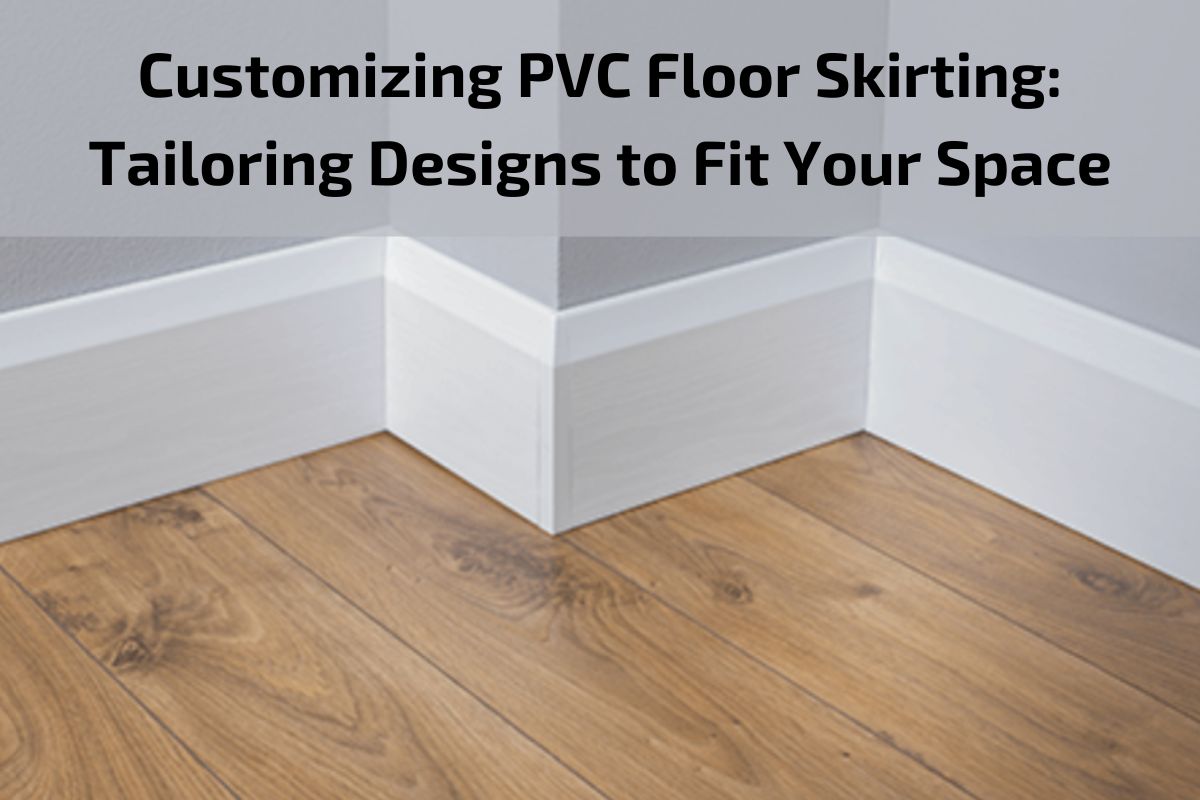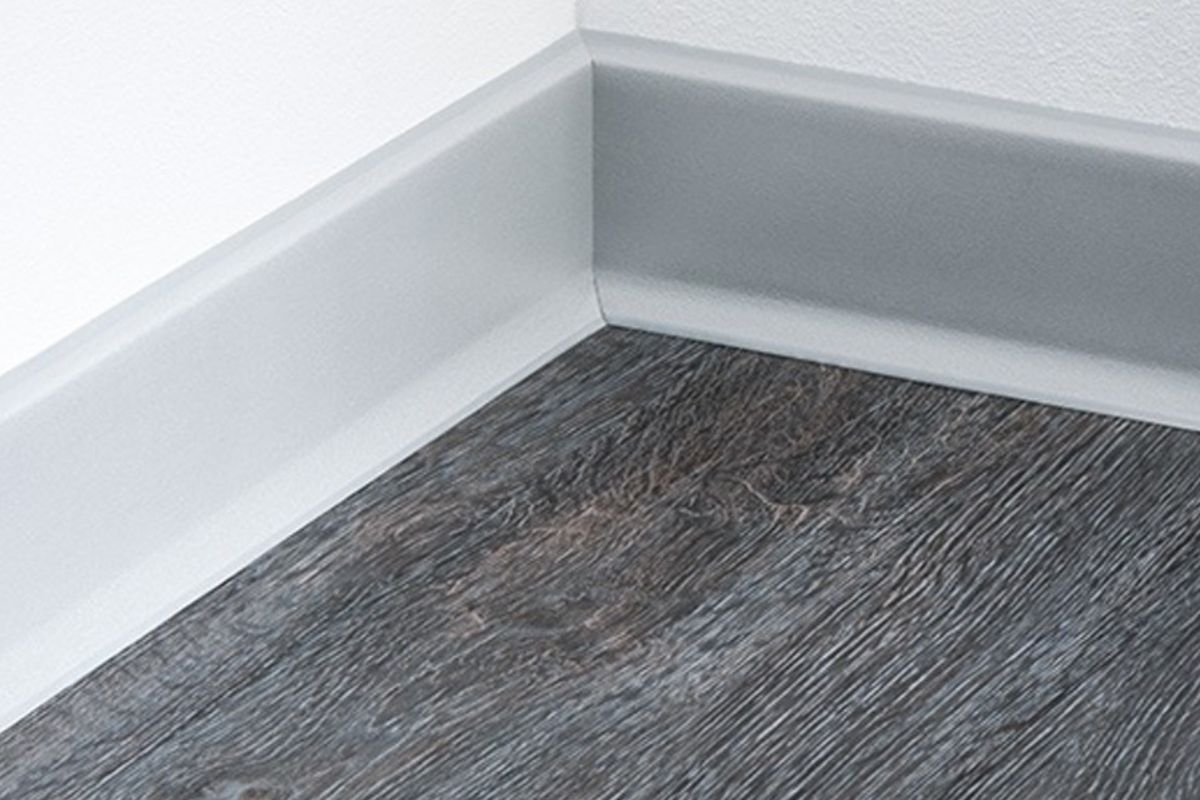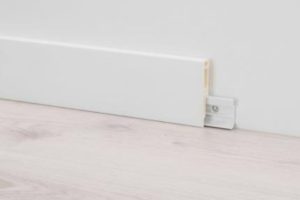
When it comes to enhancing the look and functionality of your flooring, PVC floor skirting offers a versatile and customizable solution. Not only does PVC floor skirting provide a polished finish to your flooring installation, but it also allows you to personalize the design to suit your unique space.
In this guide, we’ll explore the art of customizing PVC floor skirting, from selecting the right profiles and colors to incorporating decorative elements that reflect your personal style. Whether you’re aiming for a sleek and modern look or a more traditional aesthetic, customizing PVC floor skirting allows you to tailor the design to fit your space perfectly.
Join us as we delve into the world of PVC floor skirting customization and discover how you can transform your flooring into a stylish and functional feature of your home or commercial space. With endless possibilities for customization, PVC floor skirting offers a flexible and creative solution for achieving the look you desire while adding practical benefits to your interior design.
What is PVC Floor Skirting?
PVC floor skirting, also known as PVC baseboard or PVC molding, is a type of trim installed along the bottom edge of a wall to cover the gap between the wall and the floor. It serves both functional and aesthetic purposes in interior design.
Made from polyvinyl chloride (PVC), a durable and lightweight plastic material, PVC floor skirting is known for its affordability, versatility, and ease of maintenance. It comes in a variety of profiles, colors, and finishes to complement different flooring types and interior decor styles.
Functionally, PVC floor skirting helps to conceal uneven edges, gaps, and imperfections along the base of walls, creating a clean and finished appearance. It also provides protection against damage caused by furniture, foot traffic, and cleaning equipment, preventing dents, scratches, and scuff marks on walls.
Aesthetically, PVC floor skirting enhances the overall look of a room by providing a seamless transition between the floor and the wall. It adds a polished and cohesive finish to flooring installations, contributing to the overall design scheme and ambiance of the space.
Overall, PVC floor skirting is a practical and stylish solution for finishing off flooring installations and achieving a professional look in both residential and commercial interiors. Its affordability, versatility, and low maintenance make it a popular choice among homeowners and designers alike.
Definition and Purpose PVC Floor Skirting
Definition: PVC floor skirting, also referred to as PVC baseboard or PVC molding, is a type of trim installed along the bottom edge of a wall to cover the gap between the wall and the floor. It is typically made from polyvinyl chloride (PVC), a durable and lightweight plastic material.
Purpose: The primary purpose of PVC floor skirting is twofold: functional and aesthetic.
Functional Purpose:
- Conceals Gaps: PVC floor skirting helps to conceal the gap between the wall and the floor, providing a neat and finished appearance to the room.
- Protects Walls: It serves as a protective barrier for the lower portion of the walls, shielding them from damage caused by furniture, foot traffic, and cleaning equipment.
- Hides Imperfections: PVC floor skirting covers uneven edges, gaps, and imperfections along the base of walls, creating a smooth and cohesive look.
Aesthetic Purpose:
- Enhances Appearance: PVC floor skirting enhances the overall appearance of a room by providing a seamless transition between the floor and the wall, contributing to the visual appeal of the space.
- Adds Finishing Touch: It adds a polished and finished touch to flooring installations, completing the look and creating a professional and cohesive design.
- Complements Decor: PVC floor skirting comes in a variety of profiles, colors, and finishes to complement different flooring types and interior decor styles, allowing for customization to suit the overall aesthetic of the room.
The Benefits of PVC Floor Skirting:
PVC floor skirting offers numerous benefits that make it a popular choice for finishing off flooring installations in residential and commercial spaces. Here are some of the key advantages of PVC floor skirting:
Durability: PVC floor skirting is highly durable and resistant to wear and tear, making it ideal for high-traffic areas. It is not prone to chipping, cracking, or warping like traditional wood skirting, ensuring long-lasting performance.
Water Resistance: PVC is inherently water-resistant, making PVC floor skirting suitable for use in moisture-prone areas such as bathrooms, kitchens, and basements. It will not swell, rot, or decay when exposed to water, making it a practical choice for these environments.
Easy Maintenance: PVC floor skirting is easy to clean and maintain. It can be wiped down with a damp cloth or mild detergent to remove dirt, dust, and stains, requiring minimal effort to keep it looking its best.
Versatility: PVC floor skirting comes in a variety of profiles, colors, and finishes to complement different flooring types and interior decor styles. Whether you prefer a sleek and modern look or a more traditional aesthetic, there is a PVC skirting option to suit your design preferences.
Affordability: PVC floor skirting is cost-effective compared to other skirting materials such as wood or metal. It offers a budget-friendly option for finishing off flooring installations without compromising on quality or aesthetics.
Ease of Installation: PVC floor skirting is lightweight and easy to work with, making it quick and simple to install. It can be cut to size using basic tools and attached to the wall using adhesive or nails, saving time and labor during the installation process.
Conceals Wiring and Pipes: PVC floor skirting can be designed with built-in channels or grooves to conceal wiring, cables, or pipes along the base of the wall. This helps to create a neat and tidy finish while also providing protection for the exposed utilities.
Environmentally Friendly: PVC floor skirting is made from recyclable materials and can be recycled at the end of its lifespan, reducing waste and environmental impact. It is a sustainable choice for eco-conscious consumers.
Types and Styles of PVC Floor Skirting
PVC floor skirting comes in a variety of types and styles, each offering unique profiles, colors, and finishes to complement different flooring types and interior decor schemes. Here are some common types and styles of PVC floor skirting:
Plain Skirting Boards: Plain PVC skirting boards feature a simple, straight design without any intricate detailing. They provide a clean and minimalist look that complements modern and contemporary interior styles.
Chamfered Skirting Boards: Chamfered PVC skirting boards have angled edges that create a beveled or chamfered profile. This subtle detailing adds visual interest to the skirting while maintaining a sleek and streamlined appearance.
Ogee Skirting Boards: Ogee PVC skirting boards feature a classic S-shaped profile that adds elegance and sophistication to any room. The curved detailing of ogee skirting boards creates a timeless look that complements traditional and period-style interiors.
Torus Skirting Boards: Torus PVC skirting boards have a convex profile with a rounded top and a concave curve along the bottom edge. This traditional design adds a decorative touch to the skirting while providing a sense of depth and dimension to the room.
Bullnose Skirting Boards: Bullnose PVC skirting boards have a rounded or semi-circular profile that creates a soft and smooth transition between the floor and the wall. This type of skirting is often used in contemporary and minimalist interior designs for its clean and modern look.
Lambs Tongue Skirting Boards: Lambs tongue PVC skirting boards feature a distinctive profile with a rounded top that tapers down to a narrow point, resembling the shape of a lamb’s tongue. This decorative detailing adds a touch of elegance and character to the skirting.
Rebate Skirting Boards: Rebate PVC skirting boards have a groove or recess along the back edge, allowing them to sit flush against the wall and hide unsightly cables, pipes, or uneven surfaces. This type of skirting is ideal for creating a neat and tidy finish in rooms with integrated wiring or plumbing.
Scotia Skirting Boards: Scotia PVC skirting boards have a concave profile with a curved top and a flat back edge. This type of skirting is often used to finish curved or irregular walls, providing a seamless transition between the floor and the wall.
Custom-designed Skirting Boards: For homeowners with specific design preferences or unique architectural features, custom-designed PVC skirting boards offer the flexibility to create bespoke skirting solutions tailored to their individual needs and preferences.
Easy Maintenance: Cleaning and Durability PVC Floor Skirting
Maintaining PVC floor skirting is relatively easy and straightforward, thanks to its durable and low-maintenance properties. Here are some tips for cleaning and ensuring the durability of PVC floor skirting:
Regular Cleaning: PVC floor skirting can be cleaned regularly using a soft cloth or sponge dampened with warm water and mild detergent. Simply wipe down the skirting to remove dust, dirt, and grime buildup. Avoid using abrasive cleaners or scrubbing pads, as they may scratch or damage the surface of the PVC.
Avoid Harsh Chemicals: When cleaning PVC floor skirting, avoid using harsh chemicals such as bleach, ammonia, or abrasive cleaners, as they can cause discoloration or damage to the surface. Stick to mild, non-abrasive cleaning solutions to preserve the finish and appearance of the skirting.
Remove Stains Promptly: If spills occur on PVC floor skirting, wipe them up promptly with a damp cloth to prevent staining. For stubborn stains, you can use a mild household cleaner or a solution of warm water and vinegar to gently remove the stain. Avoid letting spills sit for an extended period, as they may become more difficult to remove over time.
Avoid Sharp Objects: To prevent scratches or damage to PVC floor skirting, avoid using sharp objects or abrasive materials near the skirting. Be cautious when moving furniture or other objects along the skirting to avoid accidental impact or scratching.
Protect from Sunlight: Prolonged exposure to direct sunlight can cause PVC floor skirting to fade or discolor over time. To prevent sun damage, consider using curtains, blinds, or UV-blocking window film to protect the skirting from excessive sunlight exposure.
Inspect for Damage: Regularly inspect PVC floor skirting for signs of damage, such as cracks, chips, or warping. If any damage is found, repair or replace the affected sections promptly to prevent further deterioration and maintain the integrity of the skirting.
Consider Preventative Measures: To minimize the need for cleaning and maintenance, consider using furniture pads or gliders under heavy furniture to prevent scratches and dents on the skirting. Additionally, you can install door stops or bumpers to prevent doors from hitting and damaging the skirting.
Conclusion
In conclusion, PVC floor skirting offers a practical and stylish solution for finishing off flooring installations in residential and commercial spaces. With its durability, easy maintenance, and versatility, PVC skirting provides numerous benefits that make it a popular choice among homeowners and designers alike.




